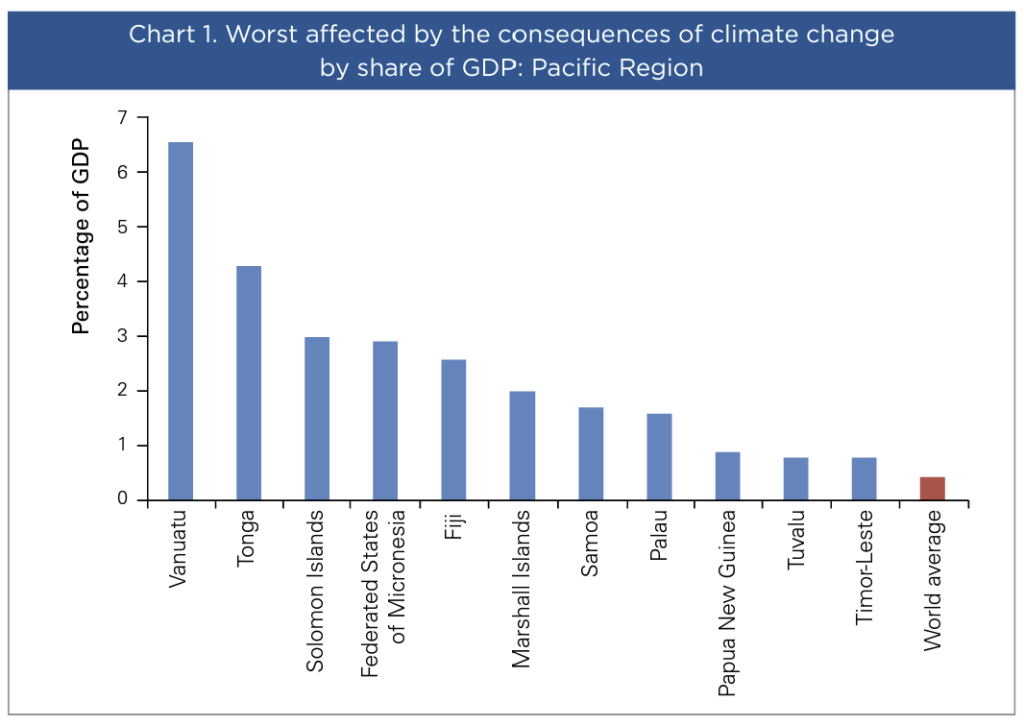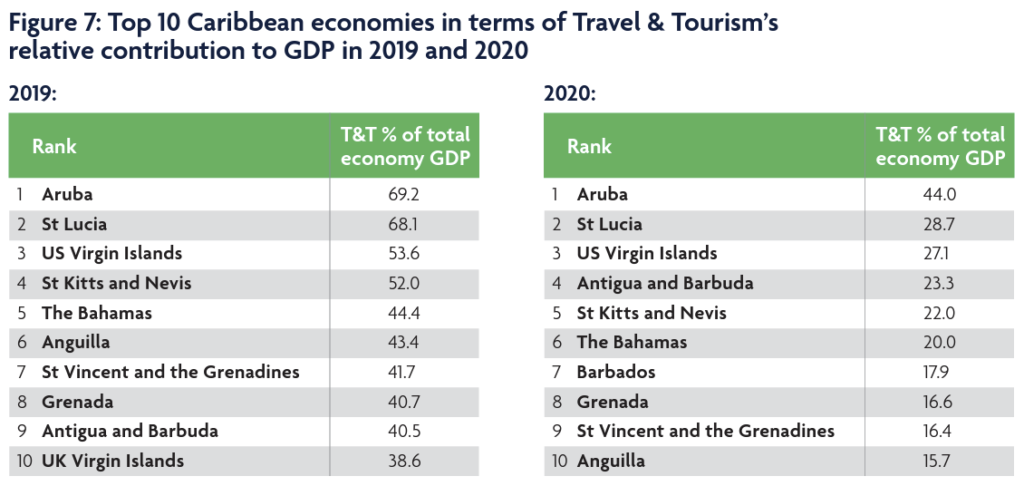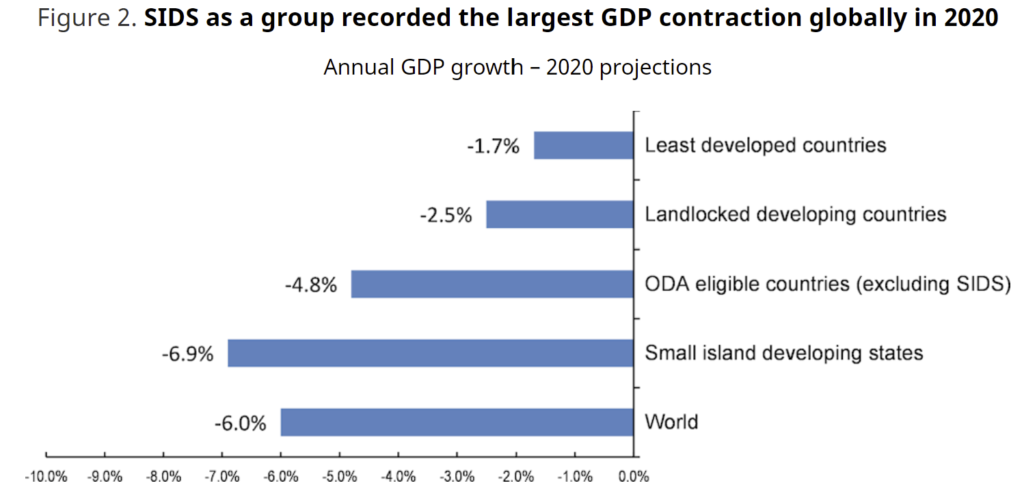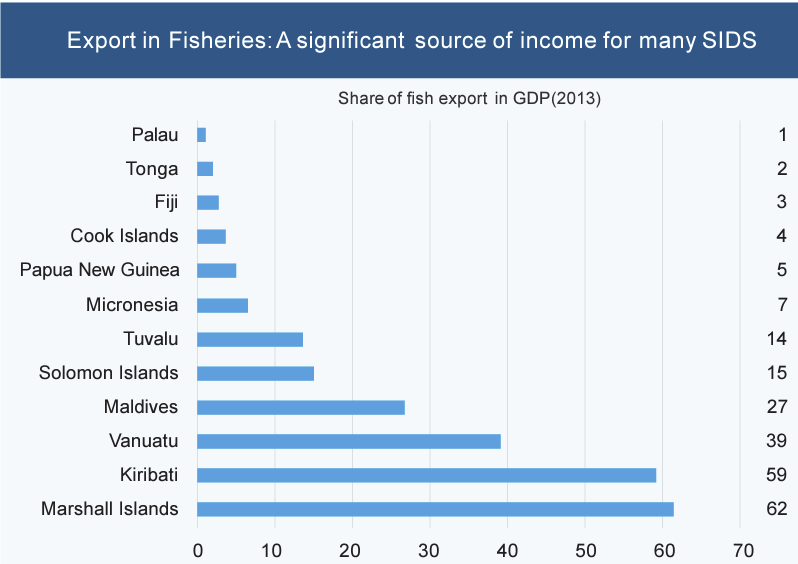Effective PFM Reform in Difficult Circumstances is Possible
Small Island Developing States are at the nexus of climate and economic vulnerability. Natural disasters inflict economic shocks to dominant industries like tourism and fishing, which stresses public finances. Revenue is volatile and numerous unexpected expenditures are often required. This is particularly significant because Public Financial Management (PFM) systems and institutional capacity is often low in Small Island Developing States.
Recent events in Tonga have again highlighted just how critical PFM reform in these nations is.

Pic: Tonga Geological Services
Why is Public Financial Management a Problem in Small Island States?
Small Island Developing States (SIDS) suffer from a crippling brain drain. Indeed, econometric analysis confirms that smallness has a strong impact on emigration rates. On average, 50% of high-skilled labour in Small Island States have left their country, and the brain drain exceeds 75% in a few cases1.
Work by the International Monetary Fund on SIDS in the Pacific region shows that PFM reforms have suffered from the small size of these States, low capacity, poorly designed PFM roadmaps, variable political support for reform, and vulnerability to natural disasters2.
The Public Expenditure and Financial Accountability Secretariat says that with small numbers of staff and high staff turnover limiting potential for sustainable gains from standard capacity building solutions, broader options for meeting capacity gaps should be considered3.
How to Achieve PFM Reform in Small Island Developing States
Despite the significant skills shortages, we have found that a steady, progressive activation approach does work.
Our experience in countries like Timor-Leste, Antigua and Barbuda, and Sri Lanka covers the breadth of public finance needs. We have likewise worked for many years in Guyana and Suriname which are also considered to fall into the SIDS category4. And we have found many similarities between SIDS and land-locked customers like Kosovo and Uganda.
Years of on-the-ground support to these customer governments has shown that the implementation of a highly configurable Government Resource Planning (GRP) system, combined with a strong local support team and a Lead-Assist-Guide approach to capacity building is critical for successful PFM reform.
Challenges Faced by Small Island States
Small Island States have a double edged sword hanging over them given their dependency on a single industry (e.g. tourism, fishing, etc) and the sensitivity of these industries to climate change and global events such as COVID-19.

 Source: World Travel and Tourism Council
Source: World Travel and Tourism Council
According to the OECD, some tourism-dependent SIDS are expected to experience particularly severe GDP contractions: in Antigua and Barbuda, Belize, Fiji, Maldives and Saint Lucia, GDP is expected to shrink by 16% or more, making the current crisis the worst in recorded history5.

Source: OECD
For fisheries-dependent SIDS expected GDP drops range between 0.5% and 4.5% while natural-resource dependent SIDS will also be negatively affected by the fall in commodity prices and supply chain issues, and all will suffer from public revenues being negatively affected by the related fall in export earnings6.
 Source: United Nations
Source: United Nations
Additionally, these countries have limited fiscal space for much needed infrastructure investments. This is exacerbated by the high cost of investment and maintenance, difficult access and environmental vulnerability7.
How Can SIDS Achieve Critical PFM Reform?
From our experience, we see five key elements for successful PFM reform in Small Island Developing States.
SIDS need to:
- Develop country-specific reform roadmaps
- Focus on critical things done well
- Leverage assessments to motivate change
- Build on progress to motivate future reform
- Design government capacity building programs and certifications to make government the preferred professional employers with attractive career paths
How Does FreeBalance Help SIDS to Sequence PFM Reform?
Whilst reform priorities differ among SIDS, we have seen some commonalities and sequencing patterns.
Firstly, massive configurability is a prerequisite. Systems such as the FreeBalance Accountability Suite™ enable governments to adapt functionality in concert with phased legal reform that has been planned in sync with the country context.
Our Government Resource Planning (GRP) software – designed for government, by government – is much easier to adapt, and less expensive to support than COTS software designed for business or Enterprise Resource Planning (ERP) that includes some public sector functionality.
In addition, FreeBalance provides both implementation services and GRP software. This commits us to our government customers as opposed to the traditional system integration model where consultants deal directly with government and COTS vendors operate at arms length outside of the project’s governance structures.
We provide PFM experts to governments rather than consultants familiar with COTS software but with little understanding of PFM complexity. We are also committed to a “glocal” model, hiring locally in countries, augmented by international mentors to reduce government costs while better understanding social and cultural contexts.
Our approach enables sustainable, country-led reform with government ownership of the PFM roadmap built on appropriate good practices tied to the country’s unique context.
Suggested Sequence for PFM Reform in Small Island Developing States
- Foundational: Close big public finance gaps, build public service capacity, analyze country context for sequencing blueprints
- Typically Sooner Rather than Later: expenditure control, international cash-based standards, and Treasury Single Account (TSA) support; accounting and reporting improvements, modern software
- Typically Later Rather than Sooner: liquidity management, budget planning, program budgeting integration, payroll, audit, tax administration
- Typically Second or Third Generation: Medium-Term Expenditure Frameworks (MTEF), State-Owned Enterprise (SOE) integration, procurement, performance management, fiscal transparency, human resources, assets
Good practices recommend that the context of a specific small island state determines sequencing priorities as some countries need more advanced PFM processes sooner.
- Resource-dependent countries should tackle resource mobilization and transparency sooner, and possibly impose fiscal rules for spending to more effectively leverage taxation and royalties for economic diversification
- Countries with low elevation should tackle public investment planning for climate adaptation
Conclusion
The bottom line is that effective PFM reform is possible in Small Island Developing States when focused on the country context while leveraging adaptable software and relevant advisory services.
Get in touch for a personal discussion on how FreeBalance can help your country’s PFM reform journey.